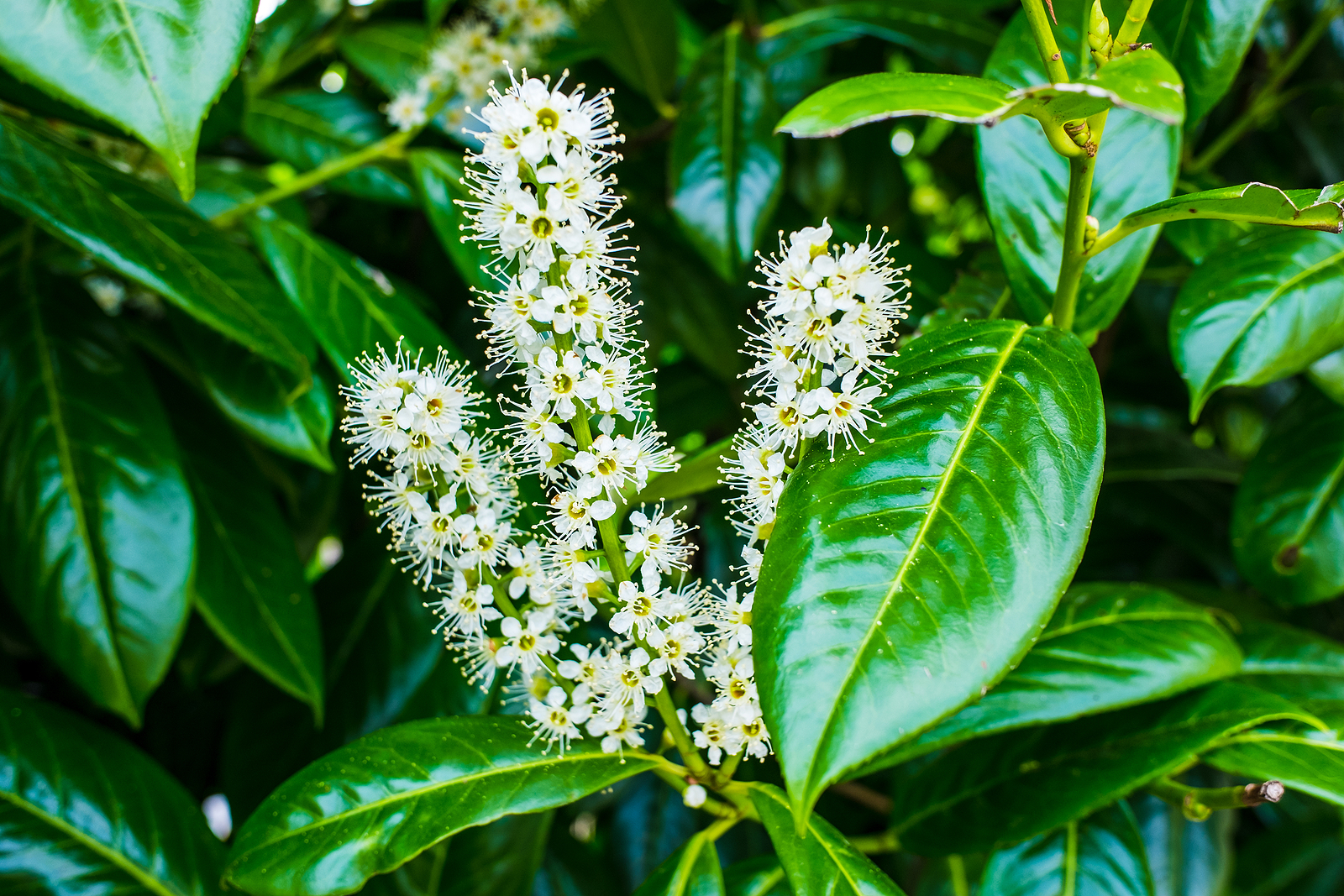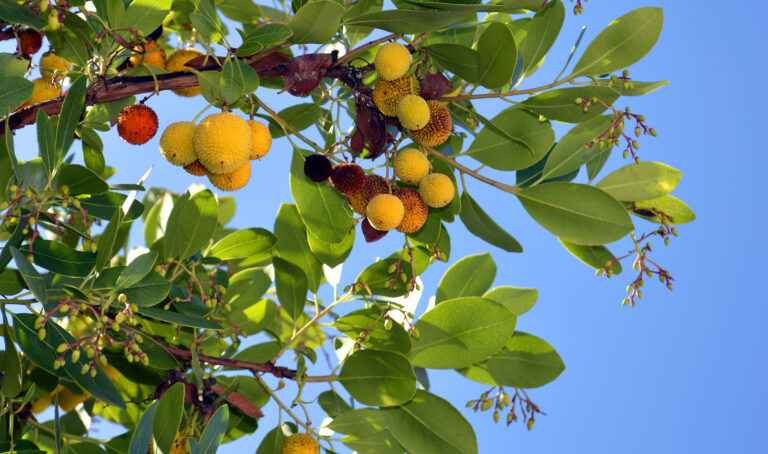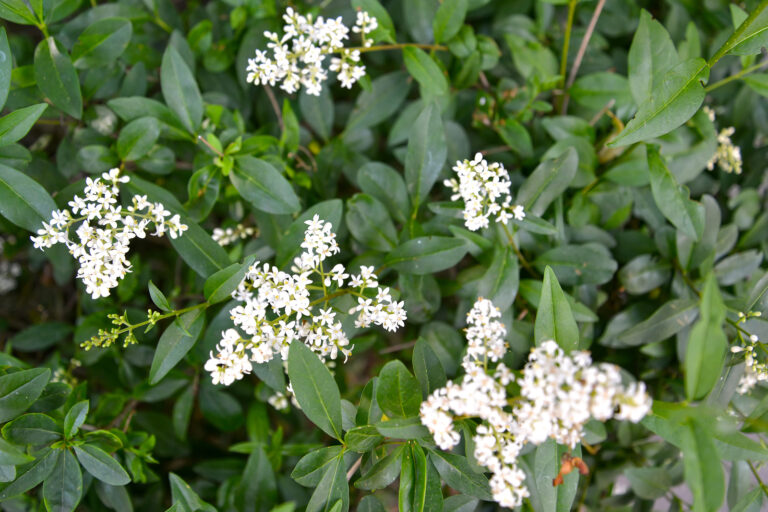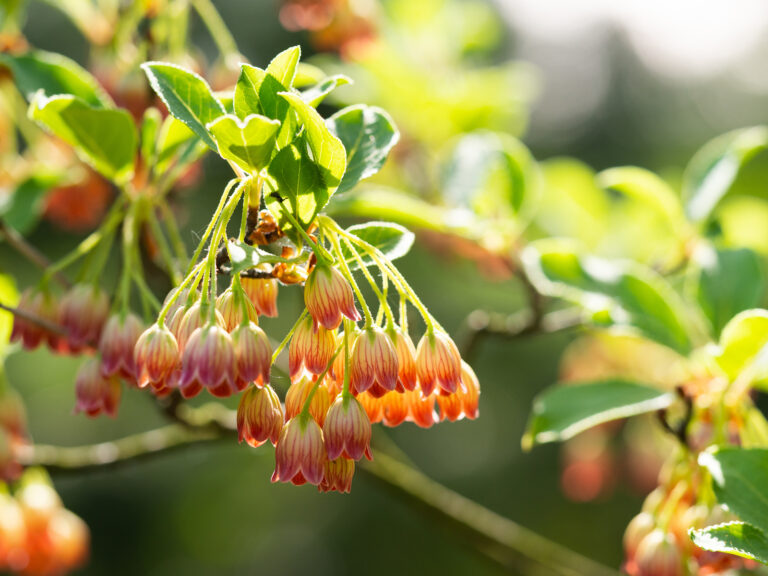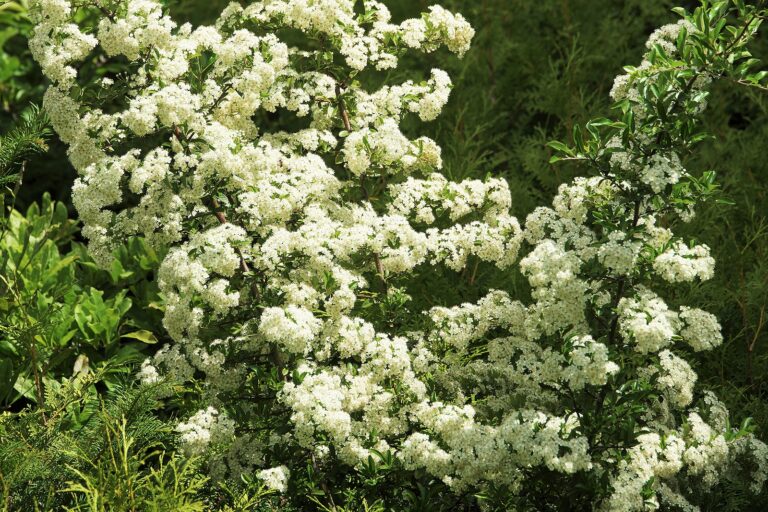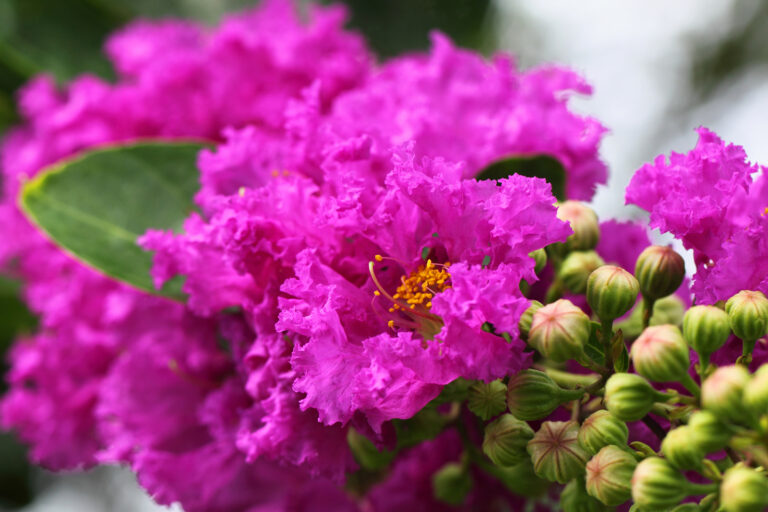How to Grow Prunus Shrubs – Laurels
Prunus shrubs—often called laurels–include deciduous and evergreen plants that grow upright, rounded, or occasionally spreading depending on the species or variety. Two species–the English laurel (Prunus laurocerasus) and the Portuguese laurel (P. lusitanica) are dense and bushy and often used for hedges and shrubs borders. Others are also suited for hedging but are less commonly used.
Prunus shrubs have broadly ovate to lance-shaped or oblong leaves that are usually medium to dark green. Prunus shrubs bear 5-petaled white, or pink, or red flowers that are saucer or bowl-shaped. A few have thorny side branches.
Most Prunus shrubs are drought-tolerant once established. Some can grow in coastal sands and can withstand salt spray.
The Prunus genus includes more than 200 species. Flowering cherries and plums are discussed in the post How to Grow Prunus–Flowering Cherry and Plum.
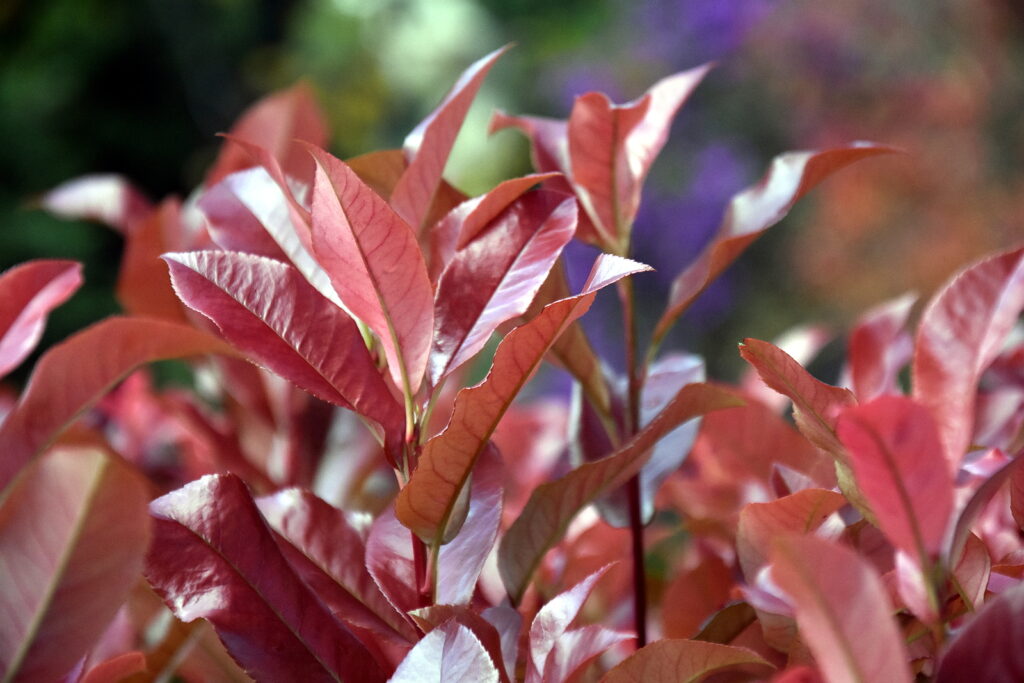
Get to know Prunus shrubs
- Plant type: Deciduous and evergreen shrubs and small trees
- Growing zones and range: Zones 3 to 9 depending on the variety
- Hardiness: Hardy to Zone 3
- Height and width: 5 to 20 feet (1.5-6m) tall and wide depending on the variety
- Growth rate: Slow to medium
- Form and habit: Spreading weeping branches
- Foliage: Alternate, pointed, oval leaves, pale green, changing to bright gold in fall
- Flowers: Clusters of five-petaled, white, or pink flowers
- Fruits: Small black, single-seeded fruits follow flowers
- Bloom time: Spring
- Uses: Showy spring flowers; lawn specimen; light shade; hedges, screens, small shade trees
- Common name: Laurels, wild plums, same cherries
- Botanical name: Prunus
- Family name: Rosaceae
- Origin: Northern temperate regions
Where to plant Prunus shrubs
- Plant Prunus shrubs in full sun.
- Plant Prunus in well-drained, sandy loam; pH 6.0 to 7.5.
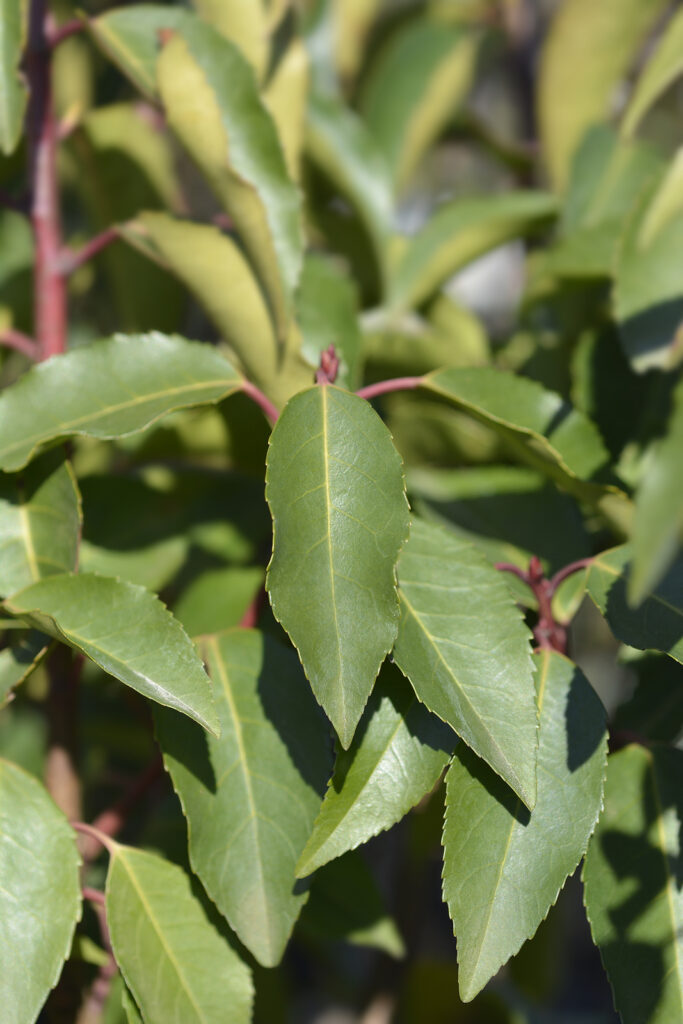
When to plant Prunus shrubs
- Plant container-grown or balled-and-burlapped Prunus shrubs in early spring or early fall.
Planting and spacing Prunus shrubs
- Space Prunus shrubs 5 to 20 feet (1.5-6m) apart depending on the variety.
- Sow seeds in containers in autumn; sow seeds 1/4 inch deep.
How to water and feed Prunus shrubs
- Give Prunus regular to moderate water.
- Feed Prunus with an all-purpose organic fertilizer in spring.
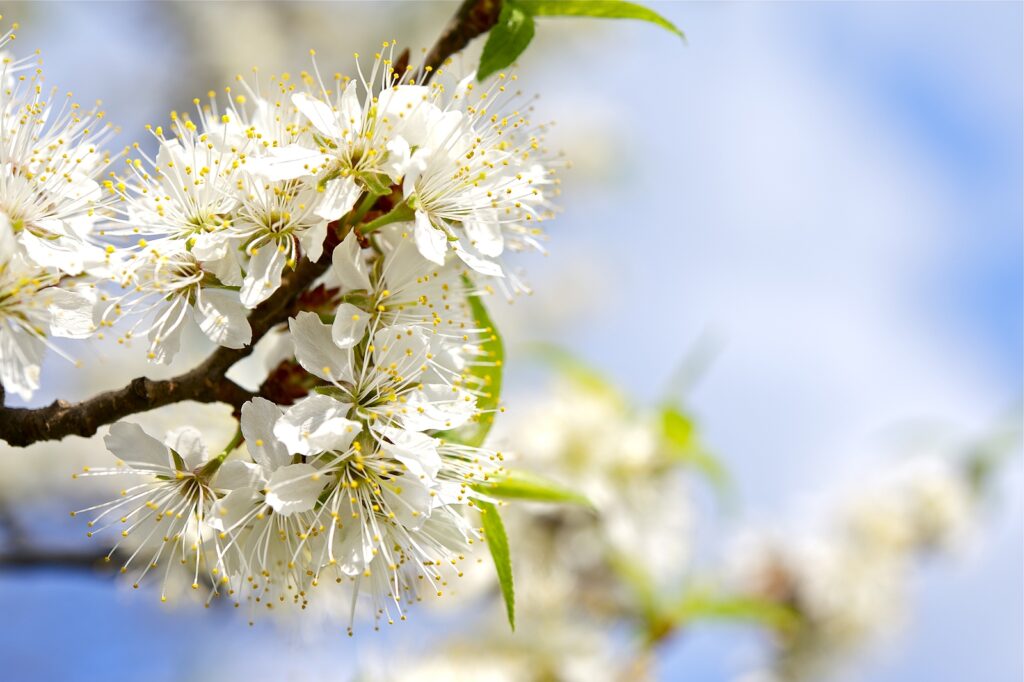
How to care for prunus Shrubs
- Pruning season for Prunus is after flowering.
Prunus shrubs pests and diseases
- Prunus are susceptible to numerous diseases and pests, including borers, scale, aphids, tent caterpillars, canker, and leaf spot.
Prunus shrubs propagation
- Sow seed of species in containers outdoors in autumn.
- Root greenwood cuttings of deciduous species in early summer.
- Root semi-ripe cuttings of evergreens in midsummer

Prunus shrub varieties to grow
- Prunus americana, Wild plum, native from New England to the southwestern United States, this deciduous shrub or small tree averages 15-20 feet (4.6-6.1m) tall, suckering to form colonies. Umbels of 1 inch (2.5cm) sweet-scented white flowers bloom before the leaves emerge in early spring. Round red or yellow fruits with a tart flavor ripen in midsummer and can be used to make jams and jellies. Zones 3 to 8.
- P. angustifolia, Chickasaw plum, an evergreen, suckering shrub with thorny side branches, is often the first woody plant to flower in its native range, from the Mid-Atlantic to Florida and west to Kansas and Texas. White .5 inch (1.3cm) flowers appear before leaves in late winter or early spring, followed by small dark berries used for jelly. Zones 5 to 9.
- P. bessyi, Western sand cherry, native to the central United States, this deciduous shrub suckers and spreads to about 5 feet (1.5m) tall and wide and has gray-green leaves. Midspring white flowers are followed in midsummer by sweet, blue-black .8 inch (2cm) berries used in jellies and desserts. Zones 3 to 6.
- P. caroliniana, Carolina laurel cherry, native from North Carolina to Texas. As an upright shrub, it can be well-branched from the base and useful as a clipped hedge or tall screen to 20 feet (6.1m) high. Can be sheared into formal shapes. Trained as a tree, it is a broad-topped plant reaching 35-40 feet (10.7-12.2m); looks attractive with multiple trunks. Densely foliaged; leaves are glossy green, smooth-edged, 2-4 inches (5.1-10.2cm) long. Small, creamy-white flowers in 1-inch spikes, appear in late winter or spring, followed by black fruit to .5 inch wide. Flower and fruit litter can be a problem in paved areas. Very tolerant of heat, wind, drought. ‘Bright’ ‘n ‘Tight’ and ‘Compacta’ are denser than the species and reach only about 10 feet (3.1m). Zones 7 to 10.
- P. glandulosa, Dwarf flowering almond, a low-growing form often used as a miniature in containers and as a shrub, grows in zones 4 to 8. Just 4 or 5 feet (1.2 or 1.5m) tall and wide, it bears light green 4 inch (10.2cm) leaves and white or pink double flowers in April or May, rarely fruiting. ‘Alba Plena’ and ‘Rosea Plena’ (‘Sinensis’) have double white and pink flowers, respectively.
- P. ilicifolia, P. lyonii, Hollyleaf cherry, Catalina cherry, two similar plants that often hybridize when growing near each other. P. ilicifolia, has glossy green, 2 inch (5.1cm) long, spiny-edged leaves similar to those of holly (though not as prickly). It is native to California’s Coast Ranges. Catalina charry, P. lyonii, native to California’s Channel Islands, has smooth-edged or very faintly toothed leaves. Both bear narrow spikes of small white flowers, followed by dark red to black cherries with large pits and not much flesh. Catalina cherry has darker fruits and is the larger plant (to a possible 45 feet (13.7m), compared to 30 feet (9.1m) for hollyleaf cherry).
- Both species can take extreme drought once established but look best with occasional deep soakings. Need good drainage. Unusually high resistance to oak root fungus. Use as small trees, screen, or clipped hedge 3-10 feet (.9-3.1m) tall. (set out plant 1.5 feet—3.8m—apart). Avoid planting near paved surfaces or parking areas, since fallen fruit causes stains.
- P. laurocerasus, Otto Luyken cherry laurel, English laurel, hardy to 5° Fahrenheit (-15°C); varieties listed below are hardier. Native from southeastern Europe to Iran. To 20 feet (6.1m) tall, though generally seen as a lower clipped hedge. Leathery, glossy dark green leaves that are 3-7 inches (7.6-17.8cm) long, 1.5-2 inches (3.8-5.1cm) wide. Blooms in summer, bearing 3-5 inch (7.6-12.7cm) spikes of creamy white flowers that are often hidden by leaves. Small black fruit appears in late summer and fall. Where adapted, a fast-growing, greedy plant that’s difficult to garden under or around. Regular water and nutrients will speed growth and keep top dense. Needs reasonably good drainage. Give partial shade in hot-summer areas. Tolerates salt spray. Stands heavy shearing but with considerable mutilation of leaves; best pruned by one cut at a time to remove overlong twigs just above a leaf. Best used as a tree or tall unclipped screen.
- P. lusitanica, Portugal laurel, Portuguese cherry laurel, native to Spain, Portugal. Densely branched shrub 10-20 feet (3.1-6.1m) high; or multi-trunked spreading tree to 30 feet (9.1m) or more. Trained to a single trunk, it is used as a formal street tree. Glossy dark green leaves to 5 inches (12.7cm) long, 2 inches (5.1cm) wide. Small, creamy-white flowers in 5-10 inch spikes in spring and early summer, followed by clusters of very small, bright red to dark purple fruit. Slower growing than P. laurocerasus and more tolerant of heat, sun, and wind. Very drought tolerant. Zones 7 to 9.
- P. maritima, Beach plum, a dense suckering shrub to 6 feet (1.8m) tall with white flowers in mid-spring, followed in late summer by dull purple fruits that are used in jams and jellies. Native along the coast from Canada to Virginia, it flourishes in salt and sand. Zones 3 to 7.
- P. tenella, Dwarf Russian almond, a deciduous shrub with upright, suckering shoot 2-5 feet (.6-1.5m) tall. Glossy leaves and deep pink flowers open together in mid-spring. ‘Fire Hill’ has bright red flowers on a plant that remains 2 feet (.6m) tall. Zones 3 to 7.
- P. X cistena, Purple leaf sand cherry, a deciduous hybrid to 10 feet (3.1m) tall and narrower with reddish-purple foliage. Often grown as a hedge in the Midwest, Zones 4 to 8. The foliage retains its rich color all summer, and its fragrant pink-white flowers open after the leaves appear, followed by purple-black fruits. “Cistena” means baby in the Sioux language. ‘Minnesota Red’ has a deeper color. Zones 4 to 7.

